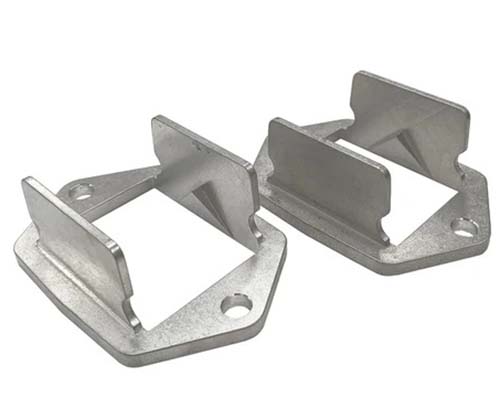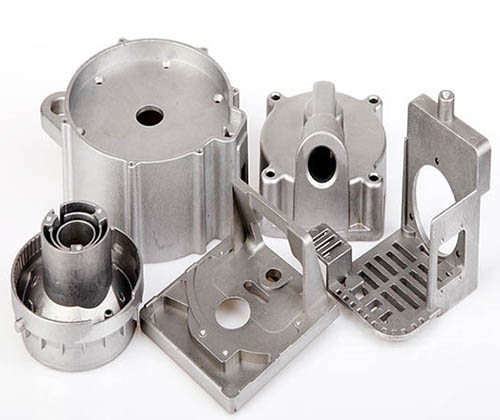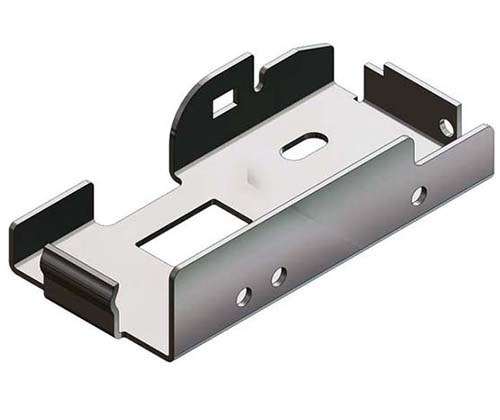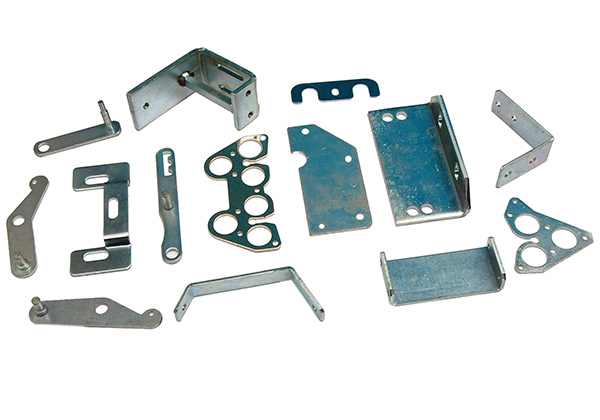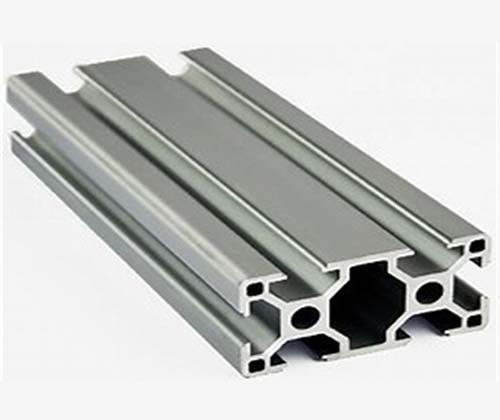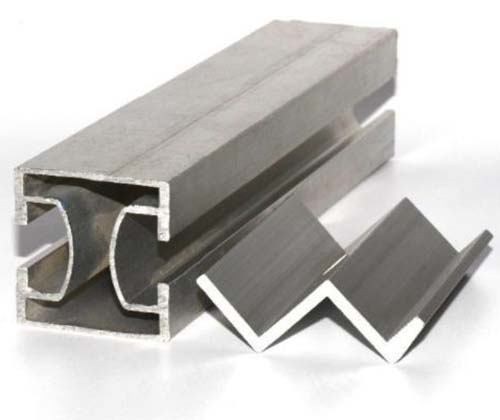You’ve turned to A390, a high-silicon aluminum alloy, for its reputation as the most wear-resistant aluminum die casting alloy, expecting parts that can withstand constant friction and high temperatures. But your production is struggling: the molten alloy flows sluggishly, leaving cylinder heads with incomplete cooling passages. Some castings are brittle and crack under stress, while others have uneven hardness—soft spots that wear quickly in high-friction applications. Maybe the die is wearing out alarmingly fast, with maintenance intervals cut in half, or the cycle time is so long it’s hard to meet production deadlines. Worse, your “high-purity” parts have large silicon particles that weaken the structure, making them unsuitable for load-bearing engine components—undermining A390’s promise of durability.
A390 aluminum alloy is a specialized high-silicon aluminum alloy (20-23% silicon) designed for extreme wear resistance. Its unique alloying elements (silicon, copper, magnesium) create a microstructure with hard silicon particles embedded in an aluminum matrix, delivering abrasion resistance that rivals cast iron. But unlocking its potential requires mastering the die casting process, from cold-chamber setup to post-treatment. In this guide, we’ll explore die casting A390, helping you leverage its unique properties to create parts that thrive in high-wear, high-temperature environments.
Material Properties: The Unique Strengths of A390
A390’s appeal lies in its specialized material properties—a blend of extreme wear resistance, heat tolerance, and strength that makes it stand out among aluminum alloys:
- Mechanical performance: A390 offers mechanical properties tailored for wear applications. It has a tensile strength of 240-280 MPa, yield strength of 180-200 MPa, and elongation of 1-2%—low ductility but sufficient for stationary mechanical parts like cylinder liners. Its hardness (120-140 HB) is significantly higher than other die casting alloys (A380: 80-90 HB), thanks to its high silicon content, which forms hard particles that resist abrasion. The copper content (4-5%) boosts strength and heat resistance, making it suitable for automotive engine components exposed to high temperatures.
- Abrasion resistance and structure: A390’s abrasion resistance is its defining feature—up to 5 times better than A380, approaching that of cast iron. This comes from its microstructure: hard silicon particles (50-100 μm) embedded in a strong aluminum matrix, which act as miniature bearings to reduce friction. When properly cast, A390 has a uniform grain structure with evenly distributed silicon particles—clustering of particles (a common defect) weakens the alloy and reduces wear resistance. Its density (2.8 g/cm³) is slightly higher than other aluminum alloys but still 30% lighter than cast iron, making it ideal for weight-sensitive applications.
- Thermal properties and fluidity: A390’s high silicon content gives it excellent thermal conductivity (140-160 W/m·K), critical for engine components that need to dissipate heat. Its casting fluidity, however, is lower than other aluminum alloys due to its high silicon content—it flows best at higher temperatures (650-680°C) but still struggles with thin sections (less than 2 mm). Its corrosion resistance is moderate (similar to A380), with the high silicon content offering some protection against mild chemicals, though it benefits from coatings in harsh environments.
Die Casting Process: Overcoming A390’s Challenges
A390’s unique properties demand specialized die casting process controls to maximize its wear resistance and minimize defects:
- Cold-chamber essentials: A390’s high melting point and viscosity require cold-chamber die casting with modified parameters. Key settings include injection speed (1-2 m/s) and injection pressure (100-140 MPa)—significantly higher than A380—to force the thick alloy into complex cavities. The die (made from premium H13 tool steel with nitride coatings) must be preheated to 250-300°C to improve flow and reduce cold shuts. A390’s hard silicon particles accelerate die wear, so die maintenance (polishing and coating reapplication) is critical every 50,000-100,000 cycles—half the interval of A380. Die lubrication (high-temperature graphite-based) must be applied generously to prevent soldering, as silicon particles can scratch the die surface.
- Die design and cooling: A390’s poor fluidity requires careful die design. Draft angles of 2-3° (larger than other alloys) ease ejection, reducing stress on brittle castings. Venting (0.2-0.3 mm gaps) is critical to release trapped gas, as porosity weakens the structure and reduces wear resistance. The gating system should use short, wide runners and large gates to minimize pressure drop—A390 flows best when injected with high pressure, so gates should be sized to fill the die in 1-1.5 seconds. Cooling rate is tightly controlled: slower cooling (10-20°C/s) allows silicon particles to form uniformly, while faster cooling can create uneven particle sizes that weaken the alloy.
- Post-casting steps: A390 requires minimal post-casting treatment beyond machining. Shot blasting (40-60 grit) removes surface oxides, but aggressive polishing is avoided to preserve the hard silicon particles. Unlike some alloys, A390 doesn’t benefit from heat treatment—its properties are set during casting. Quality control includes microstructural analysis (to check silicon particle distribution) and hardness testing, ensuring consistent abrasion resistance. For critical parts like cylinder heads, ultrasonic testing detects internal cracks caused by brittleness.
Applications: Where A390 Excels
A390’s extreme abrasion resistance and heat tolerance make it ideal for applications with constant friction and high temperatures:
- Automotive engine components: A390 is widely used in automotive engine components like cylinder blocks, cylinder heads, and piston skirts. Its wear resistance reduces friction between pistons and cylinder walls, extending engine life by 30-50% compared to cast iron. It withstands continuous temperatures up to 250°C, making it suitable for parts near exhaust systems. Transmission housings with internal gears also benefit from its ability to resist wear from metal-on-metal contact.
- Industrial and mechanical parts: Industrial equipment like pump rotors, valve seats, and conveyor components uses A390 for its resistance to abrasive materials (sand, grit, slurry). In manufacturing, mechanical parts like gearboxes and bearing housings leverage its wear resistance to reduce maintenance—parts last 2-3 times longer than A380 in high-friction environments. Its thermal conductivity (130-150 W/m·K) also makes it suitable for heat sinks in high-temperature machinery.
- High-wear consumer products: Heavy-duty hand tools (drill bits, saw blades) use A390 for their cutting edges, as it retains sharpness longer than steel in abrasive materials. Consumer products like appliance gears and power tool housings with moving parts benefit from its wear resistance, reducing the need for replacement. Its light weight (density 2.8 g/cm³ vs. cast iron’s 7.2 g/cm³) also makes tools easier to handle.
Performance and Benefits: Why A390 Stands Alone
A390 offers performance and benefits that make it irreplaceable in extreme wear applications:
- Unmatched abrasion resistance: A390’s hard silicon particles resist wear from friction, grit, and corrosion, reducing maintenance and replacement costs. In pump applications handling sandy water, it lasts 5-10 times longer than A380 and matches the life of cast iron—while weighing 60% less. This combination of wear resistance and light weight makes it ideal for weight-sensitive applications like automotive engines.
- Heat tolerance: A390 retains its hardness and strength at high temperatures (up to 250°C), outperforming other aluminum alloys that soften above 150°C. This heat stability reduces thermal expansion in engine components, maintaining tight tolerances even when engines overheat. Its thermal conductivity also dissipates heat more effectively than cast iron, reducing the risk of overheating.
- Cost efficiency: While A390 is more expensive than other aluminum alloys upfront, its longer service life and reduced weight make it cost-effective over time. In automotive production, the fuel savings from lighter engine parts offset the higher material cost within 1-2 years of vehicle operation. Its ability to replace cast iron also reduces machining costs, as aluminum is easier to machine than iron.
Yigu Technology’s Perspective: Mastering A390 Die Casting
At Yigu Technology, we specialize in A390 die casting for clients needing extreme wear resistance. We optimize injection pressure (120-140 MPa) and die temperature (280-300°C) to ensure uniform silicon particle distribution, critical for consistent wear performance. Our die designs feature enhanced gating systems and venting to handle A390’s poor fluidity, with nitride-coated dies to extend maintenance intervals. Whether you need cylinder heads, pump rotors, or industrial gears, we leverage A390’s unique properties to deliver parts that thrive in the harshest conditions. Die casting A390 isn’t just about manufacturing—it’s about engineering solutions for extreme wear.
Frequently Asked Questions (FAQ)
- Why are my A390 parts brittle and cracking?
Brittleness stems from uneven silicon particle distribution or rapid cooling. Ensure cooling rate is slow (10-20°C/s) to allow uniform particle growth—use insulated die sections for thick areas. Avoid excessive copper content (keep below 5%), as high copper increases brittleness. Also, reduce injection pressure slightly (to 100-120 MPa) to minimize internal stress, and ensure the die is preheated to 250°C+ to prevent cold shuts that weaken the structure.
- How does A390 compare to other high-silicon alloys?
A390 has the highest silicon content (20-23%) among die casting alloys, giving it better abrasion resistance than A380 (10-13% silicon) or A390’s cousin, A384 (16-18% silicon). It offers 20-30% better wear resistance than A384 but has lower ductility. A390 is ideal for extreme wear, while A384 balances wear resistance and castability for less demanding applications. Both outperform non-silicon aluminum alloys in abrasive environments.
- Can A390 be welded or joined to other metals?
A390’s high silicon content makes welding challenging—silicon can form brittle intermetallic compounds. For joining to other metals, mechanical fasteners (bolts, rivets) are preferred, as they avoid heat-affected zones. If welding is necessary, use a silicon-rich filler alloy (4043) and keep heat input low to minimize brittleness. Brazing is more successful than welding, as lower temperatures reduce silicon segregation.
